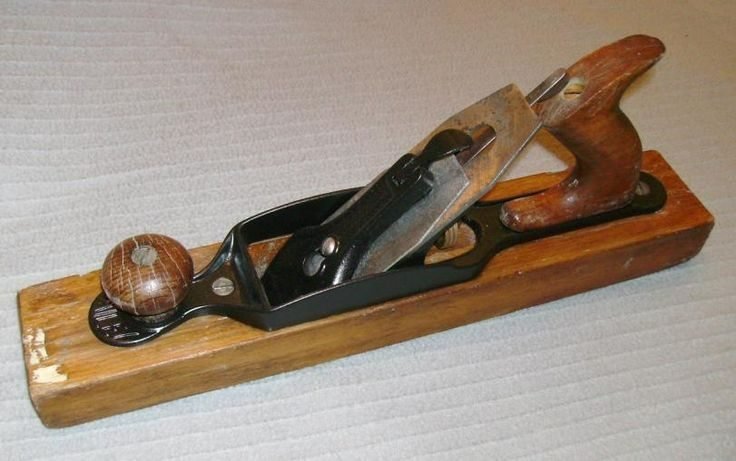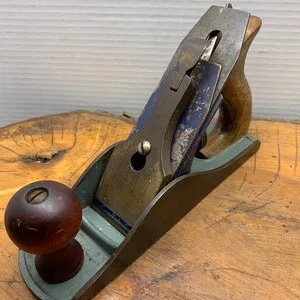The Stanley Smooth Wood Plane is a hand tool that has left a lasting mark on the world of woodworking for over a century. As a staple in workshops worldwide, its craftsmanship, functionality, and enduring legacy continue to resonate with both professional artisans and hobbyists alike.
Let’s explore the rich history, practical usage, and influence of this classic tool that has helped shape woodworking practices throughout the years.
The History of the Stanley Smooth Wood Plane
Ancient Roots to Modern Innovation
Woodworking planes have a history dating back thousands of years. Early versions of these tools were discovered at Roman archaeological sites, where carpenters used rudimentary planes made of wood and iron to smooth and shape wood with precision.

However, it wasn’t until the 19th century that wood planes evolved into the sophisticated tools we recognize today.
The Rise of the Stanley Rule and Level Company
The Stanley Smooth Wood Plane owes its origins to the Stanley Rule and Level Company, founded by Frederick T. Stanley in New Britain, Connecticut, in 1857. Initially producing hardware items, the company soon expanded into creating high-quality woodworking tools, including hand planes, to meet the growing needs of craftsmen during the industrial boom.
The Leonard Bailey Influence
In 1869, Stanley made a pivotal move by acquiring Leonard Bailey’s patents for metal-bodied planes. This acquisition marked a turning point for the company.

Bailey’s innovative designs offered superior adjustability and durability compared to traditional wooden planes, making Stanley a leader in the hand tool market. With these advancements, Stanley hand planes became the gold standard for quality and performance.
The Bailey Line: A Game-Changer in Woodworking
Stanley’s Bailey line of planes, named in honor of Leonard Bailey, became iconic in the late 19th century. Among the line’s various models, the Stanley No. 4 Smooth Plane emerged as the most popular, thanks to its versatility and reliability. This tool quickly became a must-have for furniture makers, carpenters, and craftsmen alike.
How the Stanley Smooth Wood Plane Works
Purpose and Precision
The Stanley Smooth Wood Plane is designed to smooth and flatten wood surfaces with precision. Its primary function is to remove thin layers of wood, creating a fine finish that elevates the quality of any woodworking project. Whether used for furniture making, cabinetry, or general carpentry, this tool excels at bringing wood to a polished, professional state.
Key Components and Operation
The functionality of the Stanley Smooth Wood Plane comes from its well-engineered parts, which include:
- Body: The cast iron structure provides weight and stability for smooth operation.
- Iron (Blade): The sharp, adjustable blade shaves off thin wood layers with each pass.
- Frog: A metal piece that holds the iron at the correct angle and allows for fine adjustments.
- Cap Iron: Secures the blade and minimizes chatter during use.
- Lever Cap: Locks the iron and cap iron in place, ensuring smooth cuts.
- Handle (Tote) and Knob: Offer comfort and control during operation.
Using the plane is a straightforward process that involves setting the blade depth and angle before pushing it across the wood surface in smooth, even strokes. Craftsmen often check the surface regularly to ensure the desired level of smoothness is achieved, making adjustments to the blade as necessary.
Versatility in the Workshop
One of the key reasons the Stanley Smooth Wood Plane remains so popular is its versatility. It can be used for a variety of tasks, including:
- Smoothing Rough Lumber: Ideal for removing imperfections and creating a polished surface.
- Jointing Edges: Ensures that edges are straight and even, essential for joining boards together.
- Trimming and Shaping: Perfect for fine-tuning dimensions and shaping curves.
- Finishing Touches: Adds a professional finish to any woodworking project.
Whether you’re building furniture or completing a small DIY project, the Stanley Smooth Wood Plane provides the finesse and control needed to achieve exceptional results.
The Enduring Legacy of the Stanley Smooth Wood Plane

Popularity Among Modern Woodworkers
Despite the rise of power tools in the woodworking industry, the Stanley Smooth Wood Plane continues to be a favorite among professionals and hobbyists. Its tactile precision allows for a level of control that electric tools often lack. Many seasoned craftsmen still turn to the Stanley No. 4 Smooth Plane for its balance, durability, and exceptional performance, particularly when working on detailed projects.
Influence on Contemporary Woodworking Tools
Stanley’s innovative designs have had a lasting impact on modern woodworking tools. Today’s hand planes still draw inspiration from the Stanley Bailey models, incorporating modern materials and techniques while maintaining the same core principles of craftsmanship. The influence of Stanley’s tools can be seen in the ergonomics, adjustability, and overall performance of contemporary hand planes.
A Collector’s Dream
Vintage Stanley planes, especially well-preserved examples, have become highly sought-after collectibles. Antique enthusiasts and woodworking aficionados alike prize these tools not only for their functional value but also for their historical significance.
A well-maintained Stanley Smooth Wood Plane can command high prices at auctions, reflecting its enduring legacy in both form and function.
A Symbol of Craftsmanship and Tradition
Beyond their practical use, Stanley Smooth Wood Planes represent the artistry and dedication of woodworkers throughout history. In a world where power tools dominate, these hand planes serve as a reminder of a time when craftsmanship was measured by the precision of hand tools and the skill of the artisan wielding them.

For woodworkers, using a Stanley plane is not just about completing a task—it’s about connecting with the long tradition of craftsmanship that has defined woodworking for centuries. Each stroke of the plane embodies the pursuit of perfection, making it a timeless tool for anyone passionate about the craft.
Conclusion: Why the Stanley Smooth Wood Plane Still Matters Today
The Stanley Smooth Wood Plane is more than just a tool; it’s a testament to the ingenuity, craftsmanship, and timeless design that has shaped the woodworking industry for generations. From its origins in the 19th century to its continued use in modern workshops, this iconic tool stands as a symbol of precision, tradition, and the art of woodworking.
Whether you’re a seasoned professional or a beginner exploring the world of woodworking, the Stanley Smooth Wood Plane remains an essential companion, inspiring creativity and excellence with every stroke.
Its enduring popularity and historical significance make it a tool worth celebrating—one that will continue to shape the future of woodworking for years to come.








